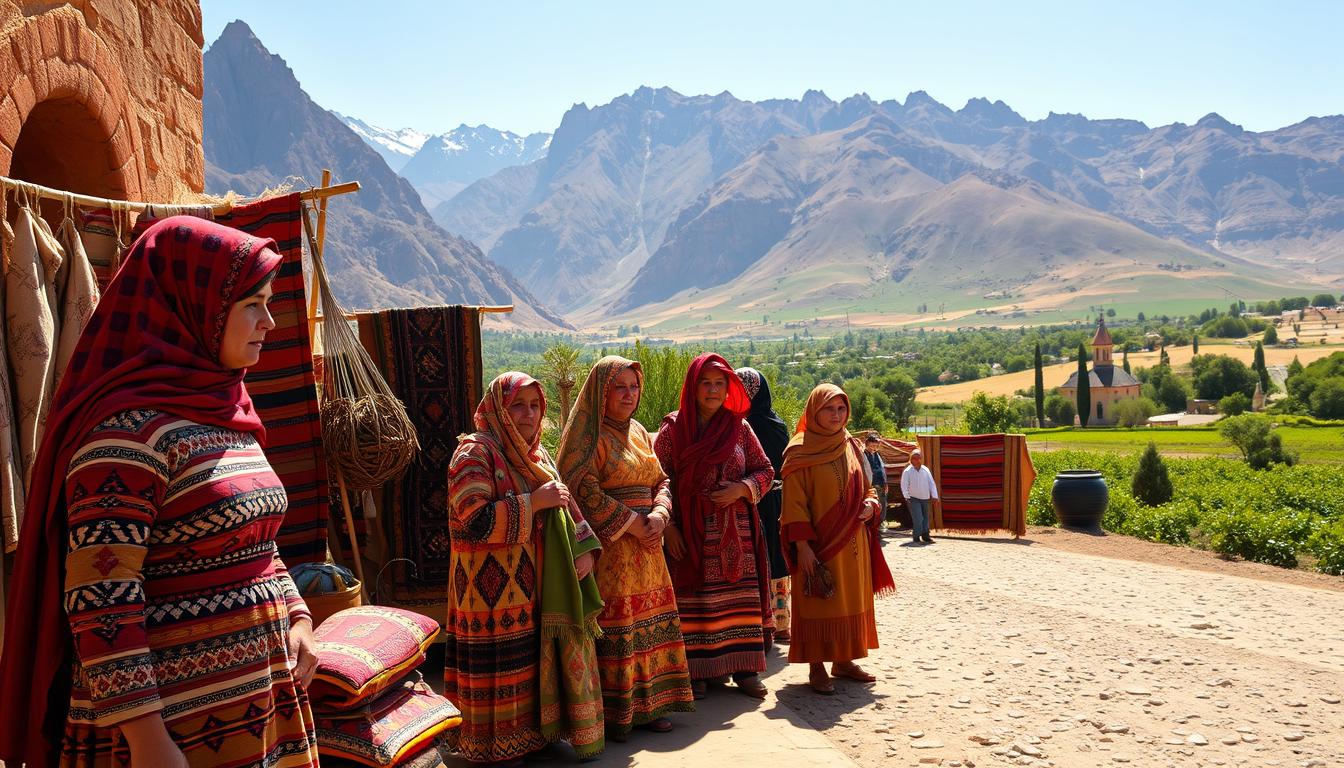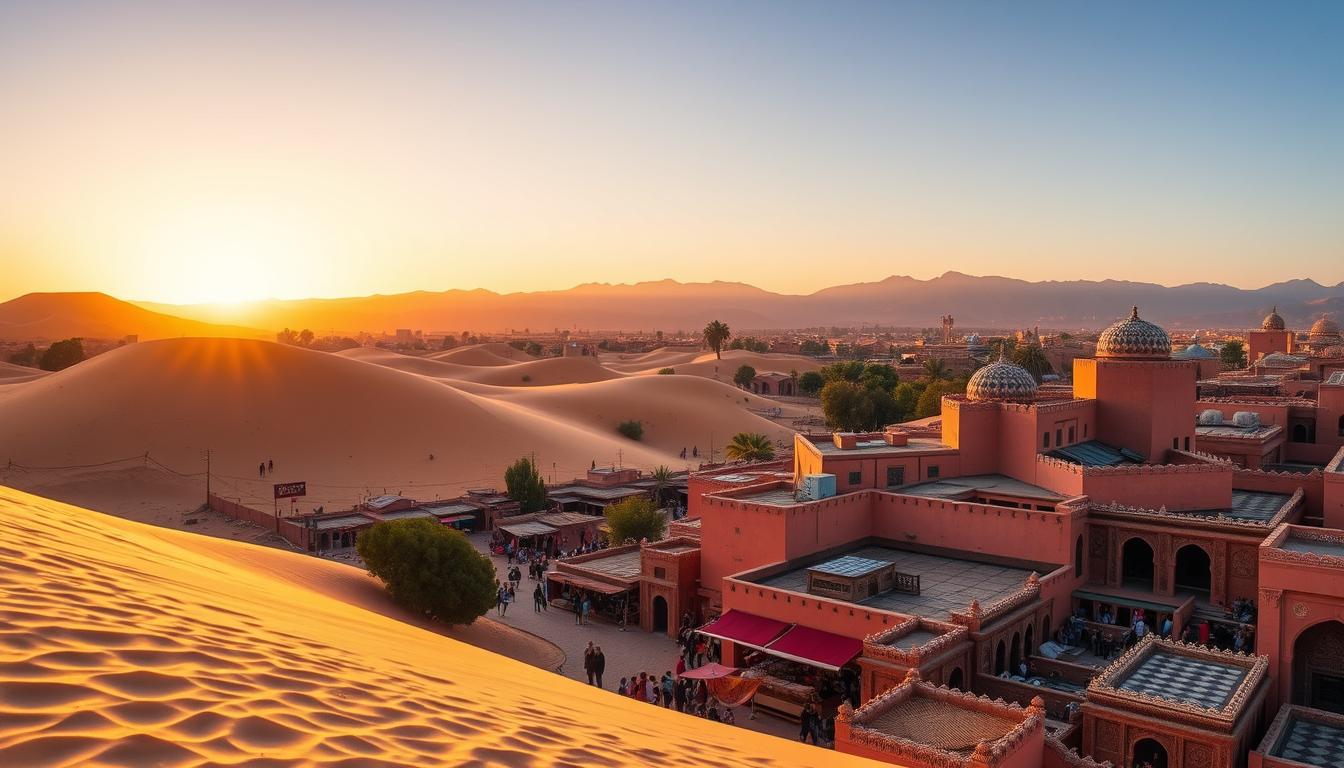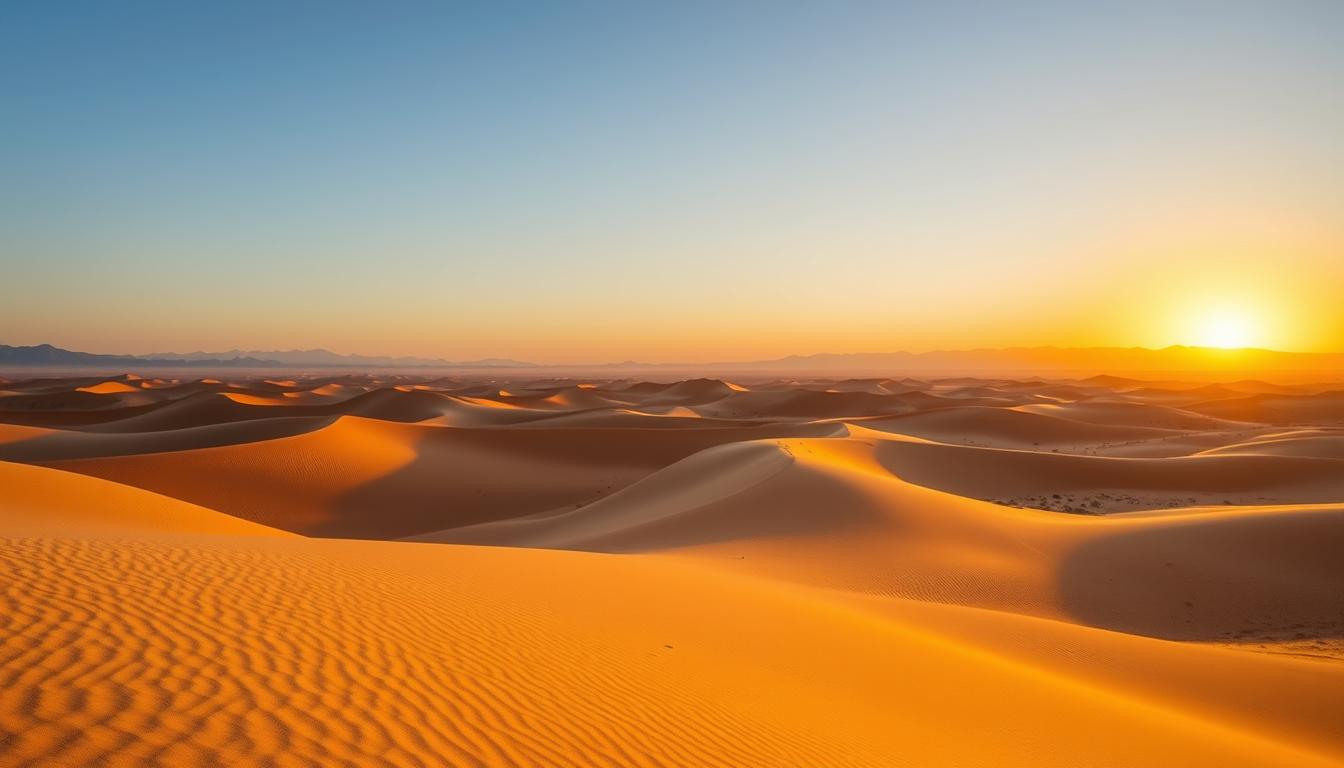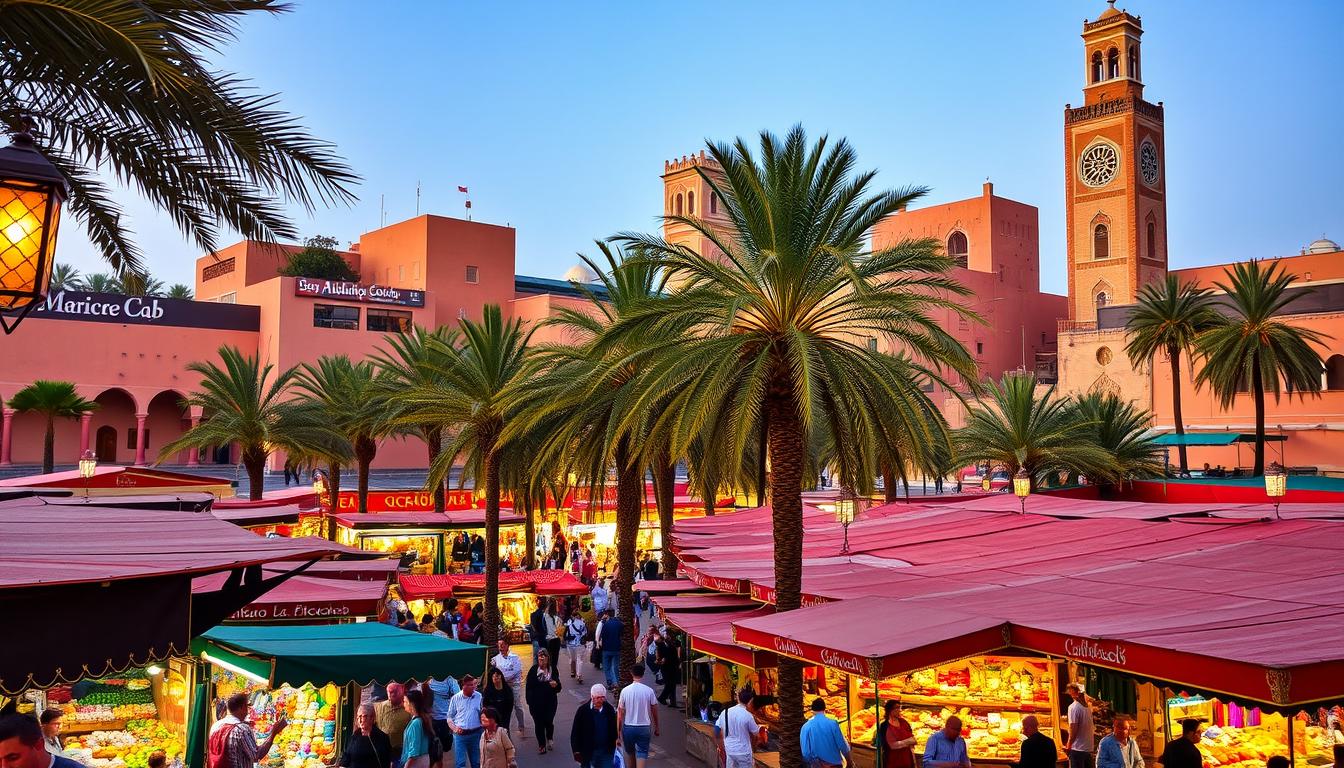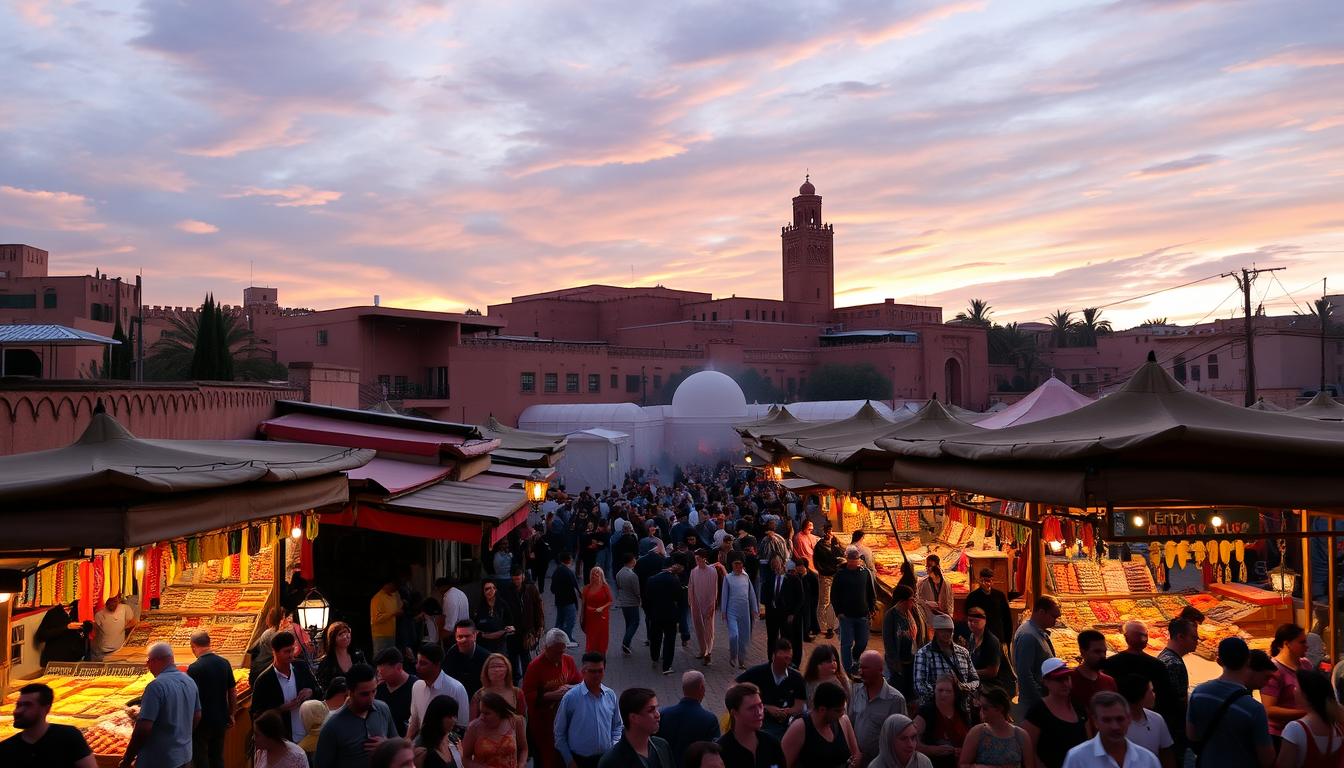The windswept landscapes of Morocco tell tales of an extraordinary people. They have shaped North Africa’s cultural heart for thousands of years. As you explore the Berber people of Morocco, you’ll find a rich mix of tradition, resilience, and cultural identity.
Moroccan Berbers, also known as Amazigh, are an ancient civilization. They live in Morocco’s mountains, deserts, and coastal areas. Their history goes back millennia, showing a deep connection to the land and a spirit of independence.
Exploring Berber people of Morocco & their world, you’ll see how Berber people keep their cultural practices alive. They adapt to modern times while staying true to their traditions. Their language and vibrant customs offer a glimpse into a world where old wisdom meets new experiences.
Key Takeaways
- Berber people of Morocco are an indigenous group with deep roots in North Africa
- Their culture represents a unique blend of ancient traditions and modern adaptations
- Moroccan Berbers have preserved their identity through language and customs
- The Berber civilization has significant historical importance in Morocco
- Understanding Berber culture provides insight into Morocco’s diverse heritage
The Rich History of the Berber People
Exploring the berber history morocco shows a rich tapestry of cultural resilience and ancient traditions. The north African berbers are one of the most enduring indigenous populations worldwide. Their roots go back thousands of years.
The story of the Berber people is a remarkable journey of survival and cultural preservation. Their civilization has weathered countless invasions and cultural shifts. They have maintained a unique identity that fascinates historians and travelers alike.
Origins of the Berber Ethnicity
Archaeological evidence shows that north African berbers have lived in the region for over 10,000 years. Their ancestral roots are deeply embedded in the landscapes of Morocco, Algeria, and other North African territories.
- Prehistoric settlements dating back to 10,000 BCE
- Indigenous populations predating Arab migrations
- Genetic studies confirming long-standing regional presence
Timeline of Berber Civilizations
| Period | Key Developments |
|---|---|
| 10,000-3,000 BCE | Early hunter-gatherer societies |
| 1,000 BCE-500 CE | Emergence of sophisticated agricultural communities |
| 700-1500 CE | Interactions with Arab, Roman, and Mediterranean cultures |
Berber Influence Throughout History
The berber history in Morocco shows remarkable cultural resilience. These indigenous people have greatly influenced North African art, language, and social structures. They have done so through centuries of challenging historical circumstances.
“We are the children of the mountains, keepers of ancient wisdom” – Traditional Berber Proverb
Their ability to preserve cultural identity while adapting to changing political landscapes is a testament to human endurance and cultural pride. The Berber people stand as a symbol of resilience and cultural pride.
Language Diversity Among Berber Communities
The Berber language in Morocco is a treasure of vibrant language that spans centuries. Berber languages, known as Tamazight, weave a complex tapestry across North Africa.
Experts say there are many dialects in the Berber language. Each part of Morocco has its own special way of speaking. These ways show the local culture.
The Tamazight Language
Tamazight is the main Berber language in Morocco. It has a complex structure and deep meaning:
- It comes from ancient North Africa.
- It has special sounds.
- It uses its own writing system.
Status of Berber Languages Today
The Berber language in Morocco has gained legal recognition in recent years. The 2011 Moroccan Constitution made Amazigh an official language. This is a big step for keeping the language alive.
“Language is the roadmap of a culture. It tells you where its people come from and where they are going.” – Rita Mae Brown
| Region | Primary Dialect | Speakers |
|---|---|---|
| Atlas Mountains | Tashelhiyt | 3.5 million |
| Middle Atlas | Central Atlas Tamazight | 2.3 million |
| Rif Mountains | Tarifit | 1.5 million |
Now, there are programs to teach Tamazight in schools. This helps keep the language alive for the next generations.
Berber Culture: Traditions and Customs
Explore the lively world of Berber traditions in Morocco. Here, old customs shape community life. Berber traditions in Morocco show a culture full of celebration, connection, and enduring practices.
Celebrating Life: Berber Festivals and Rituals
Moroccan Berber customs shine at their most loved festivals. These events highlight the community’s spirit and cultural strength. Key celebrations include:
- Imilchil Marriage Festival – A unique matrimonial gathering
- Amazigh New Year (Yennayer) – Marking the agricultural calendar
- Harvest festivals celebrating agricultural abundance
“Our festivals are more than events – they are living stories of our people.” – Berber Cultural Elder
Culinary Delights of Berber Cuisine
Berber cuisine’s unique flavors show their bond with the land and ancient cooking ways. Traditional dishes share tales of survival, creativity, and community.
| Dish | Main Ingredients | Cultural Significance |
|---|---|---|
| Tagine | Lamb, vegetables, spices | Communal cooking method |
| Amlou | Argan oil, almonds, honey | Traditional mountain region spread |
| Couscous | Semolina, vegetables, meat | Ceremonial weekend dish |
Each recipe is more than food – it’s a link to Berber heritage. The detailed preparation and shared meals deepen community ties and keep cultural identity alive.
The Berber Influence on Moroccan Society
Moroccan berbers have deeply influenced Morocco’s culture. Their art and architecture have made a lasting mark. Their amazigh culture is a rich mix of creativity and innovation, shaping Morocco’s identity.
Contributions to Moroccan Art
The artistic legacy of Berber people of Morocco goes beyond simple decorations. Their traditions show deep cultural meanings through their work:
- Textile weaving with complex geometric patterns
- Distinctive ceramic and pottery designs
- Symbolic jewelry making
- Intricate metalwork techniques
“Berber art is not just decoration, it’s a language of cultural preservation” – Cultural Historian
Impact on Moroccan Architecture
Amazigh culture has greatly influenced Moroccan architecture. It has brought unique elements that are seen today:
| Architectural Element | Berber Influence |
|---|---|
| Building Materials | Clay, stone, and natural local resources |
| Design Patterns | Geometric shapes and symbolic decorations |
| Structural Techniques | Sustainable mountain and desert construction methods |
The use of berber architectural principles shows a deep respect for the environment and heritage. These designs inspire modern Moroccan architecture. They blend traditional wisdom with today’s style.
Understanding Berber Identity in Modern Times
The Berber people of Morocco are a lively indigenous group facing tough social and political issues. They work hard to keep their culture alive and recognized. This shows how strong the morocco indigenous tribes are in holding onto their unique identity.
Challenges Facing Berber Communities
Berber people in Morocco face big hurdles in keeping their cultural heritage alive. These challenges include:
- Limited language recognition
- Economic marginalization
- Cultural assimilation pressures
- Reduced access to educational opportunities
“Our identity is our strength, and our language is our soul.” – Berber Cultural Activist
Berber Activism and Politics
Political movements are key for berber people morocco to fight for their rights and cultural freedom. Grassroots groups have formed to support indigenous rights, language preservation, and social justice.
| Activism Focus Area | Key Objectives | Impact |
|---|---|---|
| Language Rights | Official recognition of Tamazight | Constitutional amendment in 2011 |
| Cultural Representation | Increase political participation | Growing political representation |
| Educational Reform | Integrate Berber history in curriculum | Improved cultural awareness |
These efforts show the lively nature of morocco indigenous tribes in celebrating their rich cultural heritage.
The Role of Women in Berber Society
In the vibrant tapestry of Berber lifestyle morocco, women play a key role. Their contributions have grown over generations. They shape the cultural and social scenes of their communities.
The heart of Berber society is strong thanks to its women. They are the backbone of family and community life. Their roles mix tradition with modern changes.
Traditional Roles of Berber Women
- Preserving cultural heritage through textile crafts
- Managing household economics
- Passing down oral traditions and language
- Supporting agricultural activities
“In every Berber woman, there is a story of strength, wisdom, and transformation.” – Moroccan Cultural Historian
Advances and Modern Perspectives
Today, Berber women are pushing past old limits. They seek education and become leaders in their communities. They respect their culture while aiming for personal and societal growth.
- Increased access to higher education
- Professional careers in various sectors
- Active participation in political discourse
- Entrepreneurial initiatives in rural communities
The story of Berber women is one of resilience and change. It shows their ability to adapt and grow within their rich culture.
The Berber Lifestyle and Livelihoods
The berber lifestyle in Morocco is a mix of old traditions and new ways. Moroccan berbers have learned to live well in tough places. They do this by respecting their environment and keeping their culture alive.
Living in mountains and deserts is hard. But the Moroccan berbers have found smart ways to farm. They turn hard-to-use land into places that grow food.
Agricultural Practices in Berber Regions
Berber farming is very clever:
- Terraced farming on steep mountain slopes
- Advanced water conservation techniques
- Cultivation of drought-resistant crops
- Sustainable crop rotation methods
“Our land teaches us patience and wisdom” – Traditional Berber Proverb
Craftsmanship and Handicrafts
Berber communities are great at making detailed handicrafts. These crafts show their rich culture. They are useful and beautiful.
| Craft Type | Cultural Significance | Economic Impact |
|---|---|---|
| Carpet Weaving | Storytelling through patterns | Major income source |
| Pottery | Preserving ancestral techniques | Tourist attraction |
| Metalwork | Symbolic design elements | Export craft industry |
Each handicraft shows the knowledge passed down through generations. It connects the modern berber lifestyle in Morocco to their ancient traditions.
The Amazigh Flag: Symbolism and Significance
The Amazigh flag is a strong symbol of identity for the Berber people. It shows their rich culture and fight for recognition. This flag tells a story of resilience and pride.
The flag’s design is full of meaning. Each color and element was chosen to show the Berber community’s values. It gives us a glimpse into the depth of amazigh culture and the spirit of its people.
Colors and Symbols Explained
The Amazigh flag has three main colors, each with its own cultural meaning:
- Blue: Represents the Mediterranean Sea and the sky
- Green: Symbolizes the mountains and natural landscapes
- Yellow: Signifies the desert and the strength of the Berber people
“Our flag is more than cloth and color – it is the soul of our people.” – Berber Cultural Leader
Use of the Amazigh Flag Today
In today’s world, the Amazigh flag is a powerful symbol. It’s used in cultural festivals and political demonstrations. It shows the journey of Berber identity.
| Context | Significance |
|---|---|
| Cultural Events | Celebration of Berber heritage |
| Political Movements | Symbol of cultural recognition |
| Educational Institutions | Representation of Berber identity |
The flag is key in keeping and sharing amazigh culture. It reminds us of the community’s rich history and cultural rebirth.
Berber Music and Dance Traditions
The musical world of Morocco’s Berber traditions is full of life and color. It has lasted for centuries. Music and dance are key to keeping Berber culture alive. They are powerful ways to share stories and express feelings.
Berber music connects people to their past. It brings communities together in joy and celebration. These performances are more than just fun. They are a way to keep cultural traditions alive.
Popular Instruments in Berber Music
Berber music in Morocco is known for its unique sounds. These sounds tell stories of past generations. Some famous instruments include:
- Bendir: A traditional frame drum with a deep sound
- Gimbri: A three-stringed lute used in spiritual and celebratory songs
- Rhaita: A double-reed wind instrument that creates beautiful melodies
“Music is the heartbeat of Berber culture, connecting past and present through rhythmic expressions.” – Moroccan Cultural Historian
Dance Styles of the Berber Communities
Berber dances are full of life and meaning. Each step tells a story, from everyday life to spiritual events. Traditional dances often involve:
- Circle dances that show unity
- Rhythmic steps that mimic nature
- Ceremonial dances for important life moments
These musical and dance traditions are essential to Moroccan culture. They connect past and present, keeping Berber heritage alive.
The Berber Clothing: An Insight into Attire
Moroccan Berber customs show a rich textile heritage. This heritage tells stories through detailed clothing designs. The traditional clothes of Berber communities are more than fabric. They are a vibrant way to express cultural identity and history.
Berber clothing reflects the diverse landscapes and social structures of moroccan berber customs. Each garment has deep symbolic meaning. It represents tribal affiliations, social status, and personal achievements.
Traditional Garments and Their Meanings
The traditional Berber wardrobe includes several distinctive pieces:
- Burnous: A hooded wool cloak symbolizing protection and social standing
- Taqiya: Intricate headwear representing individual and community identity
- Haik: A large white cloth worn by women, signifying modesty and elegance
“Our clothing is a canvas that tells the story of our people” – Berber Elder
Modern Adaptations of Berber Dress
Contemporary Berber fashion combines traditional elements with modern design. Young designers are reimagining moroccan berber customs. They create innovative clothing that honors ancestral techniques and appeals to global fashion trends.
| Traditional Element | Modern Adaptation |
|---|---|
| Wool Burnous | Contemporary Urban Coat Designs |
| Hand-woven Textiles | High-Fashion Runway Pieces |
| Tribal Embroidery | Contemporary Accessory Designs |
Young Berber artisans are turning traditional craftsmanship into a dynamic fashion statement. This bridges generational and cultural gaps.
Tourism and Berber Heritage in Morocco
Morocco’s Berber people offer a unique peek into ancient culture. They have kept remarkable traditions alive. These traditions make tourism an immersive experience. Visiting their villages gives travelers deep insights into a rich heritage.
Traveling through Berber areas shows stunning landscapes and cultural practices. Your trip can offer authentic experiences. These are different from usual tourist spots.
Must-Visit Berber Villages and Regions
- Aït Benhaddou: A UNESCO World Heritage site with stunning clay architecture
- Todra Gorge: Dramatic mountain landscape with traditional Berber settlements
- High Atlas Mountain Villages: Remote communities maintaining centuries-old traditions
- Ourika Valley: Picturesque region showing Berber farming practices
Ethical Tourism Practices
Responsible travelers can help Berber communities by choosing mindful tourism. These methods protect cultural integrity and offer economic benefits.
| Ethical Practice | Community Impact |
|---|---|
| Hire Local Guides | Direct economic support |
| Purchase Authentic Handicrafts | Supports traditional craftsmanship |
| Respect Cultural Norms | Maintains cultural dignity |
| Stay in Community Homestays | Provides direct income to families |
“Travel is about experiencing authentic connections with people and their traditions.” – Moroccan Tourism Expert
Your careful way of exploring Berber areas makes tourism meaningful. It turns a passive activity into a cultural exchange.
The Berber Community’s Relationship with the Environment
North African Berbers have a deep connection with nature. They understand environmental sustainability long before it was known globally. Their traditional ways show a deep respect for the land that has supported them for thousands of years.
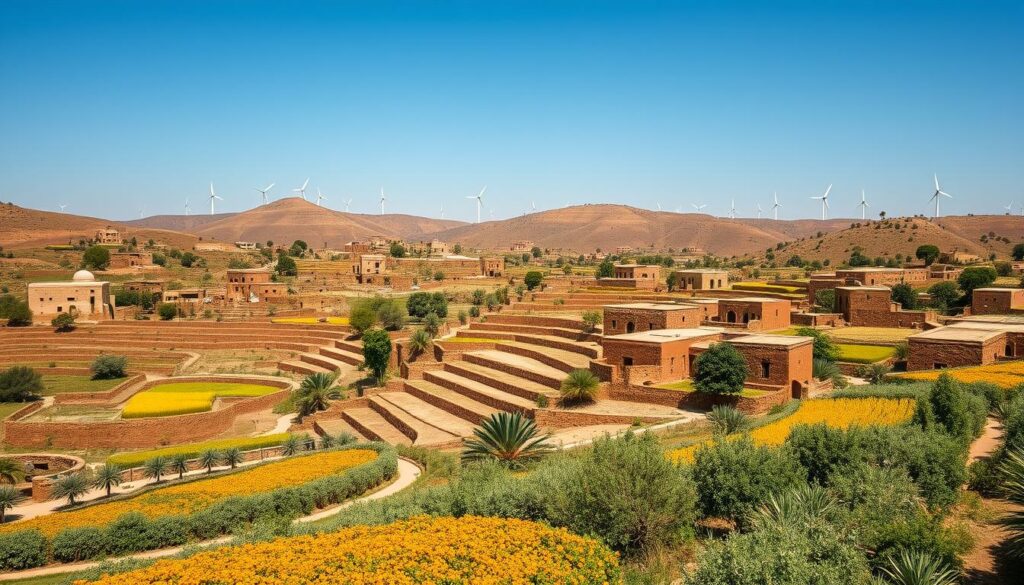
Their approach to caring for the environment comes from generations of wisdom. They show a complete relationship with nature, not just for survival.
Sustainable Practices Among Berbers
- Water Conservation Techniques
- Sustainable Agricultural Methods
- Traditional Resource Management
Berber communities have learned to save water and protect their ecosystems. Their farming ways include:
| Practice | Environmental Benefit |
|---|---|
| Terraced Farming | Prevents soil erosion |
| Rainwater Harvesting | Maximizes water resources |
| Crop Rotation | Maintains soil fertility |
The Role of Nature in Berber Culture
For north African Berbers, nature is more than a resource. It is a spiritual ecosystem that they deeply connect with. Their culture shows a deep respect for the land, treating it as a living being.
“The earth does not belong to us, we belong to the earth” – Traditional Berber Wisdom
This understanding of nature’s balance inspires modern sustainable practices. It teaches valuable lessons in protecting the environment for all communities.
Notable Berber Figures in History
The history of Morocco’s Berber people is filled with amazing individuals. They have greatly influenced culture, knowledge, and politics. Their achievements are a testament to the rich Berber heritage.
Influential Berber Leaders
Many leaders in North African history have been Berbers. They played key roles in shaping politics and culture. Here are a few:
- Yusuf ibn Tashfin: Founder of the Almoravid Empire who united Morocco
- Queen Kahina: A legendary Berber warrior who resisted Arab expansion
- Mohammed V: The Moroccan king who led the country to independence
Contributions to Arts and Sciences
Berber communities have given us many scholars and artists. They have made big impacts in different fields. Their knowledge and creativity are vast:
- Ibn Battuta: A world-renowned explorer who traveled extensively across continents
- Leo Africanus: A geographer and writer who documented African cultures
- Contemporary Berber artists pushing boundaries in visual and performing arts
“The Berber people represent a testament to resilience, creativity, and intellectual achievement.” – Cultural Historian
These individuals show how Berber culture has shaped global history. They left a legacy of innovation, leadership, and cultural richness. This legacy continues to inspire people today.
Future of the Berber People in Morocco
The Berber people face a key moment in Morocco’s changing social scene. Younger Berbers are leading the way in keeping their culture alive. They are finding new ways to learn about their heritage while joining the modern world.
Education is playing a big role in this shift. Programs are blending old traditions with new skills. This helps Berber youth stay true to their roots while aiming for their dreams.
Youth and Educational Aspirations
Berber youth see education as a way to preserve their culture and move forward. They are learning Tamazight, Arabic, and French. This keeps them connected to their heritage.
Digital tools and community networks are helping these young learners. They are key in supporting Berber youth’s goals in Morocco.
An Overview of Current Challenges
Despite progress, Berber communities face big challenges. Economic gaps, poor infrastructure, and cultural neglect are issues. But, grassroots efforts and government support offer hope.
The determination of Berber youth is inspiring. It shows a bright future where tradition and progress can live together.
FAQ
Who are the Berber people?
The Berber people, also known as the Amazigh, live in North Africa, mainly in Morocco. They have a rich culture that started long before Arab influence. Despite many challenges, they have kept their language, traditions, and identity.
What language do Berbers speak?
Berbers mainly speak Tamazight, a language with many dialects across North Africa. In Morocco, Tamazight became a national language in 2011. This was a big win for keeping Berber culture alive.
Where do Berbers predominantly live in Morocco?
Berbers mostly live in the Atlas Mountains. This includes the High, Middle, and Anti-Atlas. They also live in the Rif Mountains in northern Morocco and in cities across the country.
What are some traditional Berber occupations?
Berbers are skilled in farming, herding, and crafts. They are experts in farming, herding sheep and goats, weaving, pottery, and making jewelry and metalwork.
What is significant about Berber clothing?
Berber clothes are known for their detailed designs, bright colors, and practical use. Traditional outfits like the djellaba and burnous show Berber culture and adapt to their environment. Each style and pattern tells a story of different regions and tribes.
How do Berbers preserve their cultural heritage?
Berbers keep their culture alive by speaking their language, making traditional crafts, and celebrating unique festivals. They also share stories, promote Amazigh culture through education, music, and art, and join cultural organizations.
What is the Amazigh flag?
The Amazigh flag is a symbol of Berber identity. It has blue, green, and yellow colors with a red character from the Tifinagh alphabet. The flag stands for pride, unity, and the fight to preserve Berber heritage.
Are Berbers indigenous to Morocco?
Yes, Berbers are the original people of Morocco and much of North Africa. Archaeology shows they’ve been there for over 10,000 years. Despite many invasions, they’ve kept their unique culture.
What role do women play in Berber society?
Berber women are key in family and community life. They manage homes, work in agriculture, make crafts, and keep traditions alive. They’re also becoming more involved in education, politics, and business.
How can tourists respectfully experience Berber culture?
Tourists can respect Berber culture by visiting villages, joining cultural tours, buying crafts from local artisans, and learning about their history. It’s important to respect customs and engage with communities through responsible tourism.

